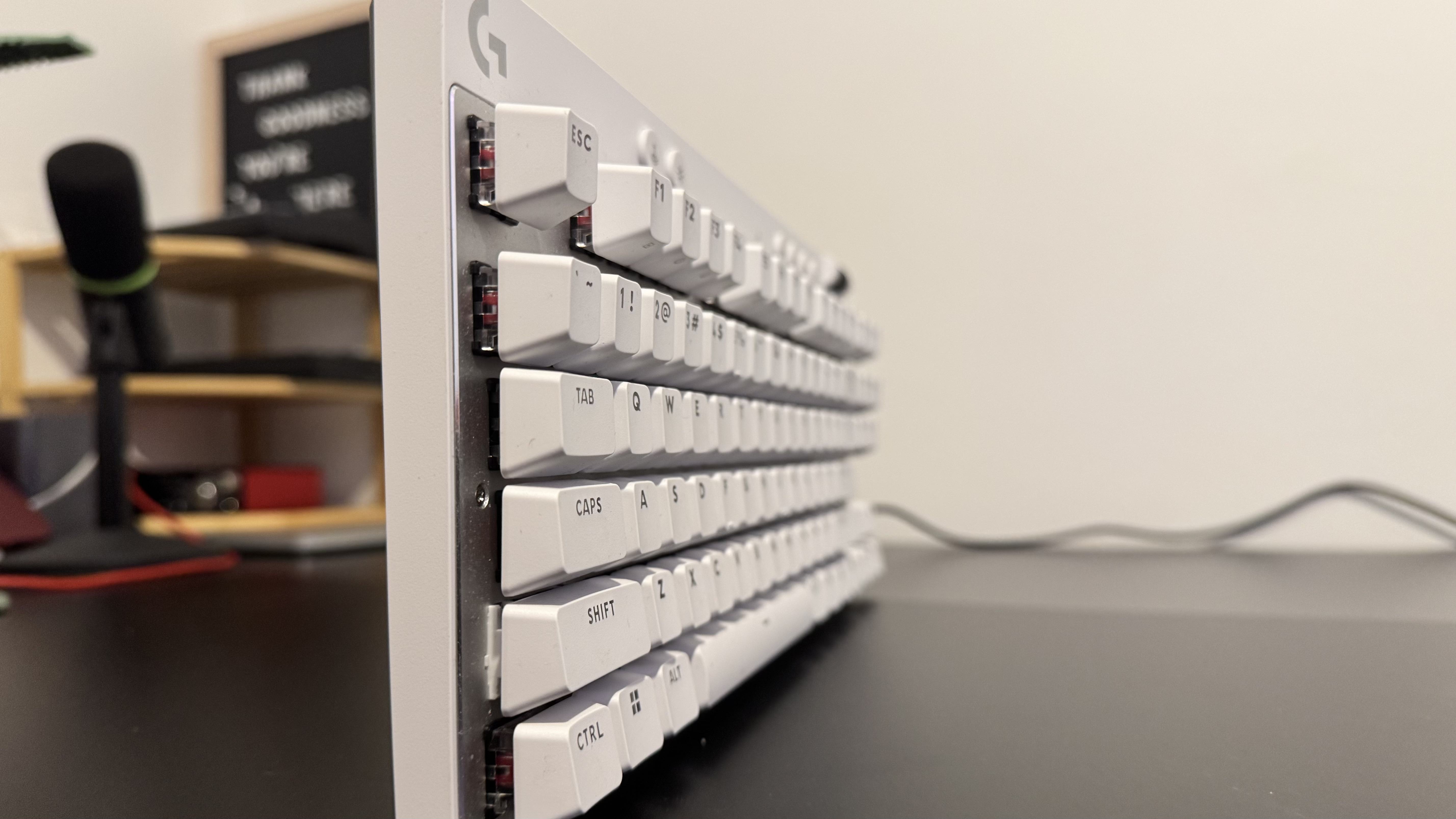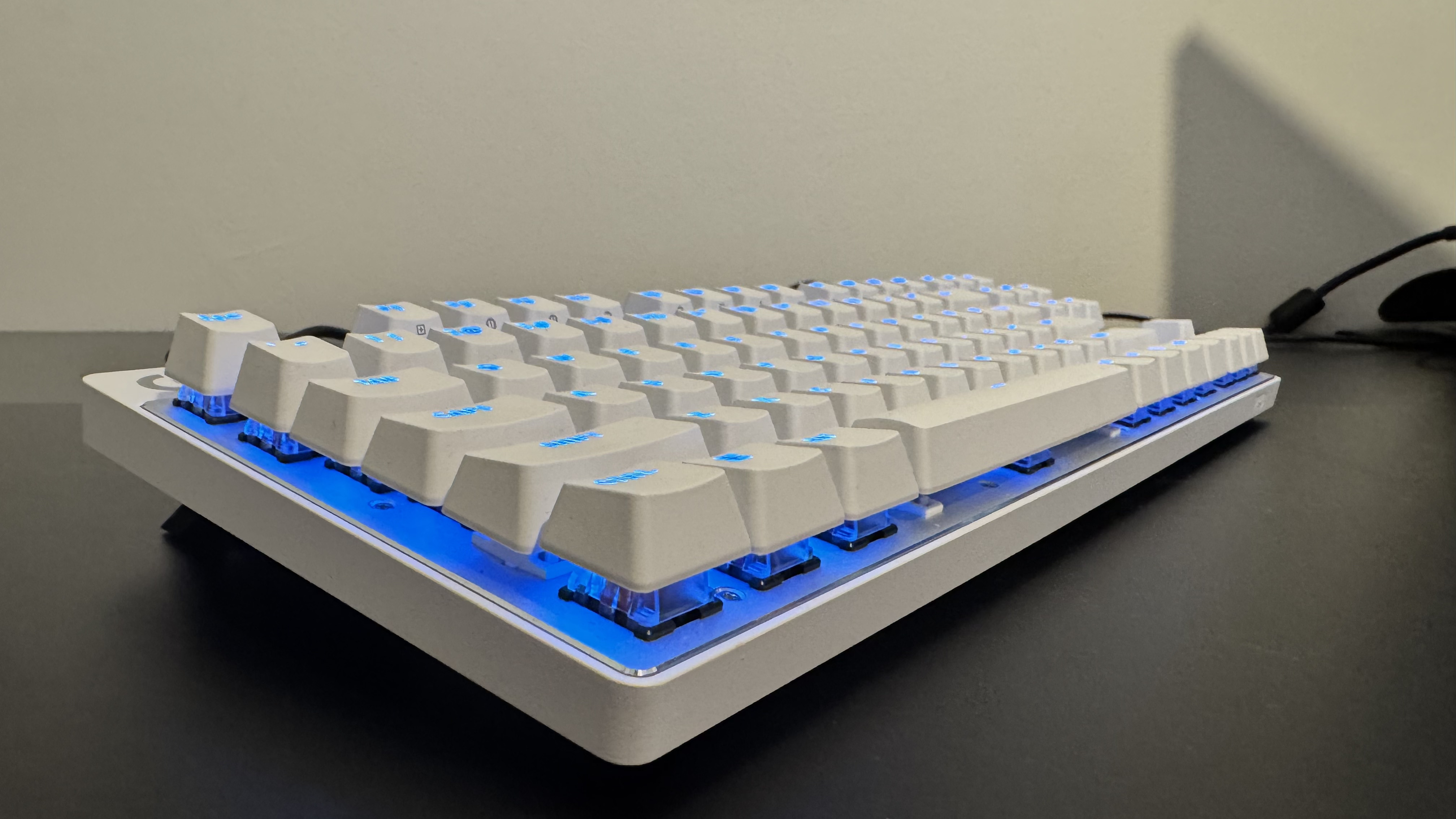
With the Logitech G Pro X TKL Rapid coming with both Logic's first attempt at rapid trigger and its own SOCD tech, its focus is very clear: This wants to be the cutting edge, even if that edge was dulled by SOCDs' banning in Counter-Strike in the latter half of last year.
Logitech's version of SOCD is called Key Priority, and it effectively allows you to make software shortcuts for how it handles opposite commands. When you tap the d and a keys together, instead of standing still, it can prioritise the last used key, the first used key, or a specific one each time.
This was banned in Counter-Strike 2, as it was judged to give an unfair advantage to players who didn't know how to strafe effectively, which, I think, is why it isn't really mentioned that much in the keyboard's marketing materials.
What is mentioned, however, is that rapid trigger implementation which, alongside custom actuation, adds so much to Logitech's current lineup. With the launch of the Pro X Superlight 2 Dex and Logitech G Pro Lightspeed, I found myself wondering what they would really add to the average Logitech gamer's life, even if they were solid upgrades. I don't need to wonder about that with the TKL Rapid, as its selling point is practically in the name.
Starting with the rapid trigger. This has long been a selling point of Wooting, our previous pick for the best gaming keyboard for rapid trigger before being dethroned by the SteelSeries Apex Pro TKL Gen 3. Rapid trigger lets you adjust the sensitivity for when you let go of a switch, which not only allows you more control over long presses but makes consistent pressing much quicker.
If you want to stop moving in the likes of Valorant, which penalises you for shooting while moving, this allows you the absolute quickest response time. This keyboard is also wired only, which makes some sense as even the slightest amount of latency would discount the reason for getting rapid trigger keys in the first place.
You can also customise actuation, which is how far down you have to press a key to register a hit. Impressively, this can go anywhere from 0.1 mm all the way up to 4.0 mm, which, turns out, is less than I naturally hit keys anyway. I know this because Logitech G Hub, the software for Logitech gear, tells you how hard you press individual keys when you're in the 'actuation point' tab. This helps to contextualise the types of actuation that works for you.

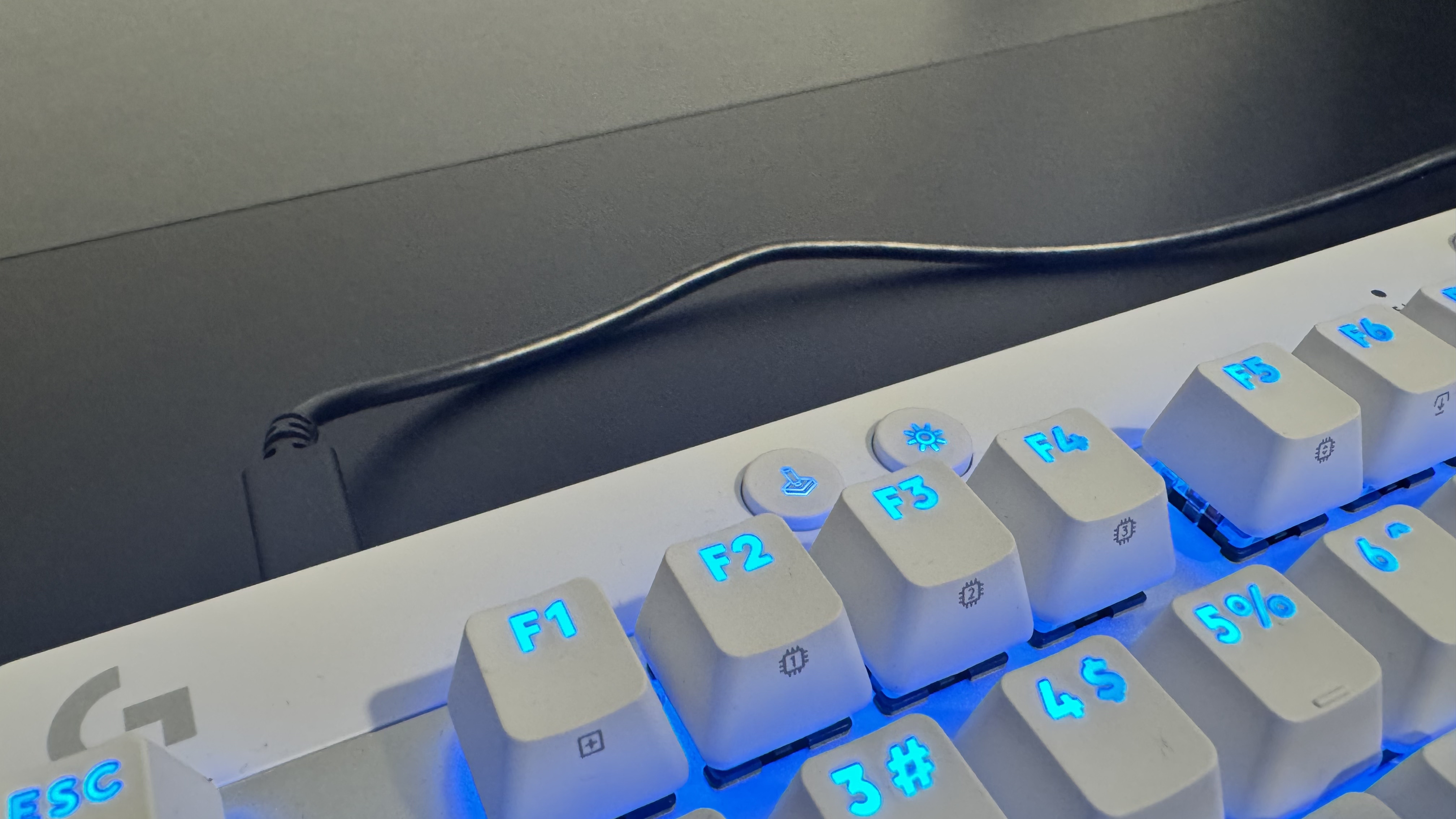
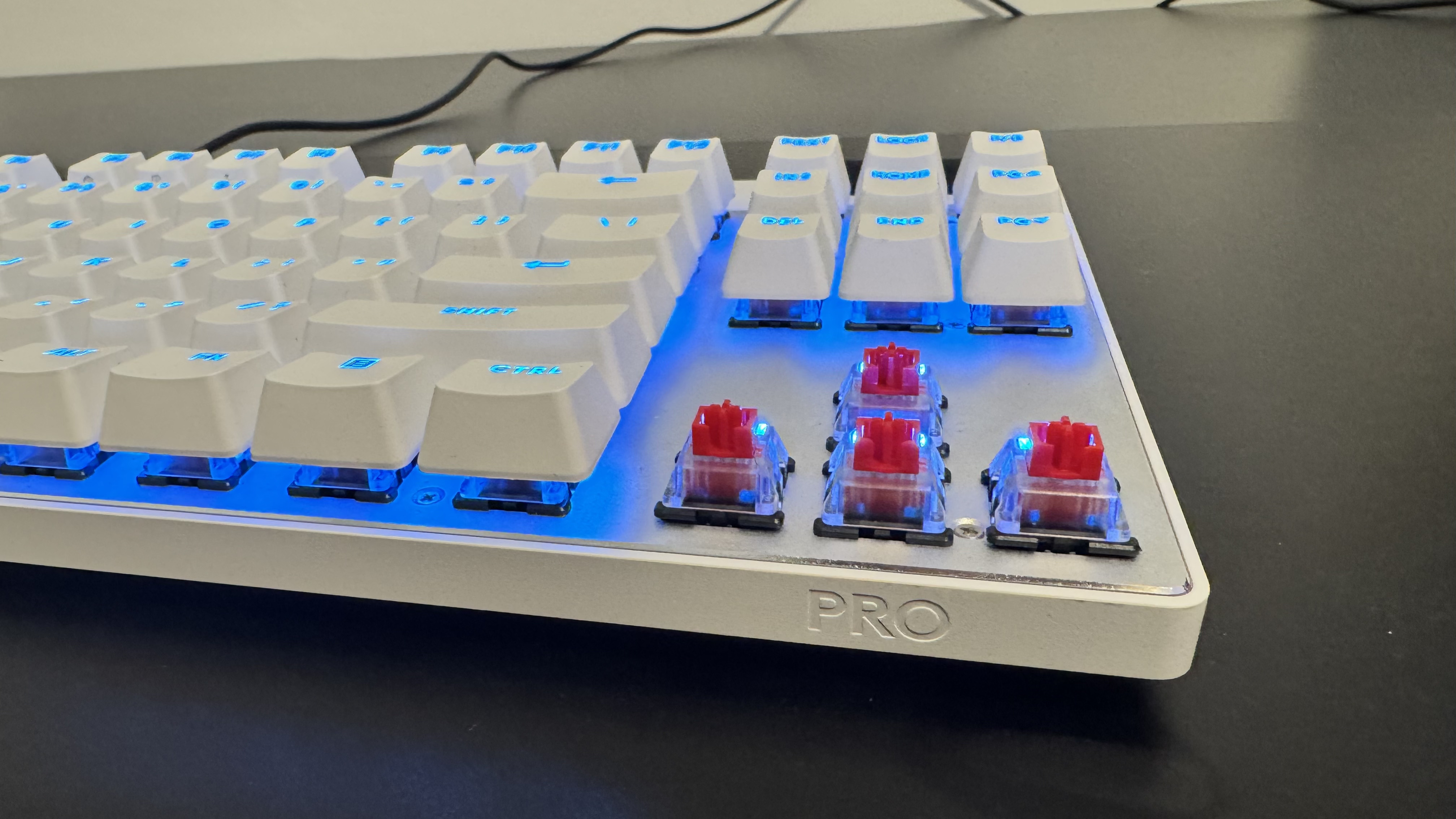
As the keys can register how far they are away from the analogue switches, you can actually set two actuation points with each key, like walking when you press down to 2 mm and running when you press 4 mm down.
You can either use rapid trigger, multi-actuation, or SOCD individually, but not at the same time.
The G Pro X TKL Rapid has a very smooth typing experience. Lubricated switches ensure everything goes down with little pressure and the custom actuation points help to avoid most of those pesky mistypes. It's a very loud keyboard, much more so than the Logitech G915X Lightspeed, SteelSeries Apex Pro TKL Gen 3, and other keyboards I have to hand. I quite like the clackiness of it all, but in an office space or with a partner who is a bit more sensitive to sound, this may soon get irritating.
The front plate of the keyboard is aluminium, which adds a lot of sturdiness, but this isn't the cause of the sound. Neither are the switches, which are quite silent with the keycaps off. Something about the pressure and speed of typing gives this keyboard a bit of a perceptible thump as keys go down. Despite that aluminium, the back of the G Pro X TKL Rapid is plastic, which I think is a smart move as the keyboard doesn't feel as heavy as you might imagine from its strong materials.
The back of the keyboard is plastic, which means the aluminium at the front adds a sturdiness and the plastic means it isn't super heavy on a desk or in a backpack. There's nearly no flex when bent too, which I broadly wouldn't advocate doing to your keyboard—but it's still nice to have some assurance there.
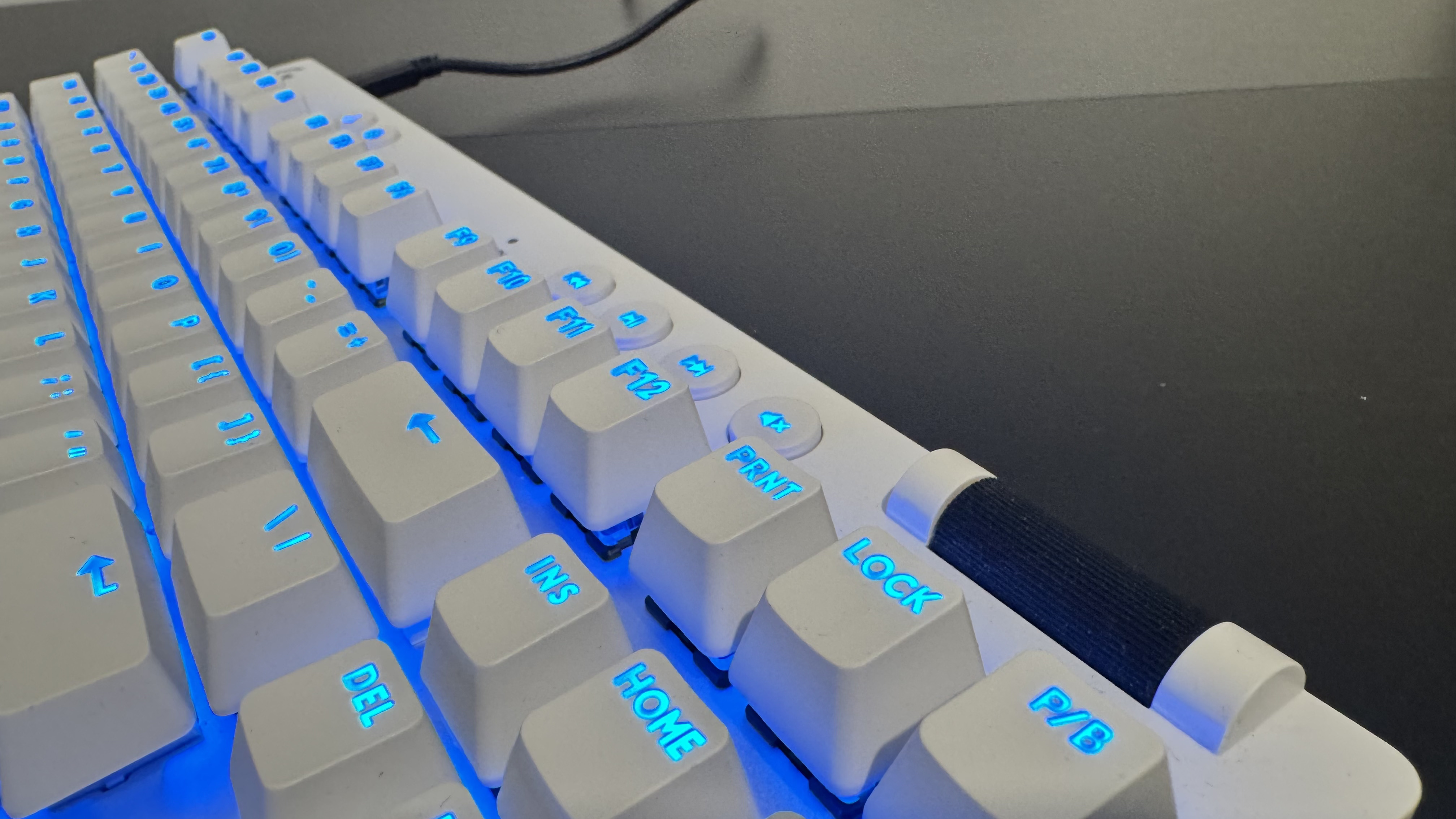
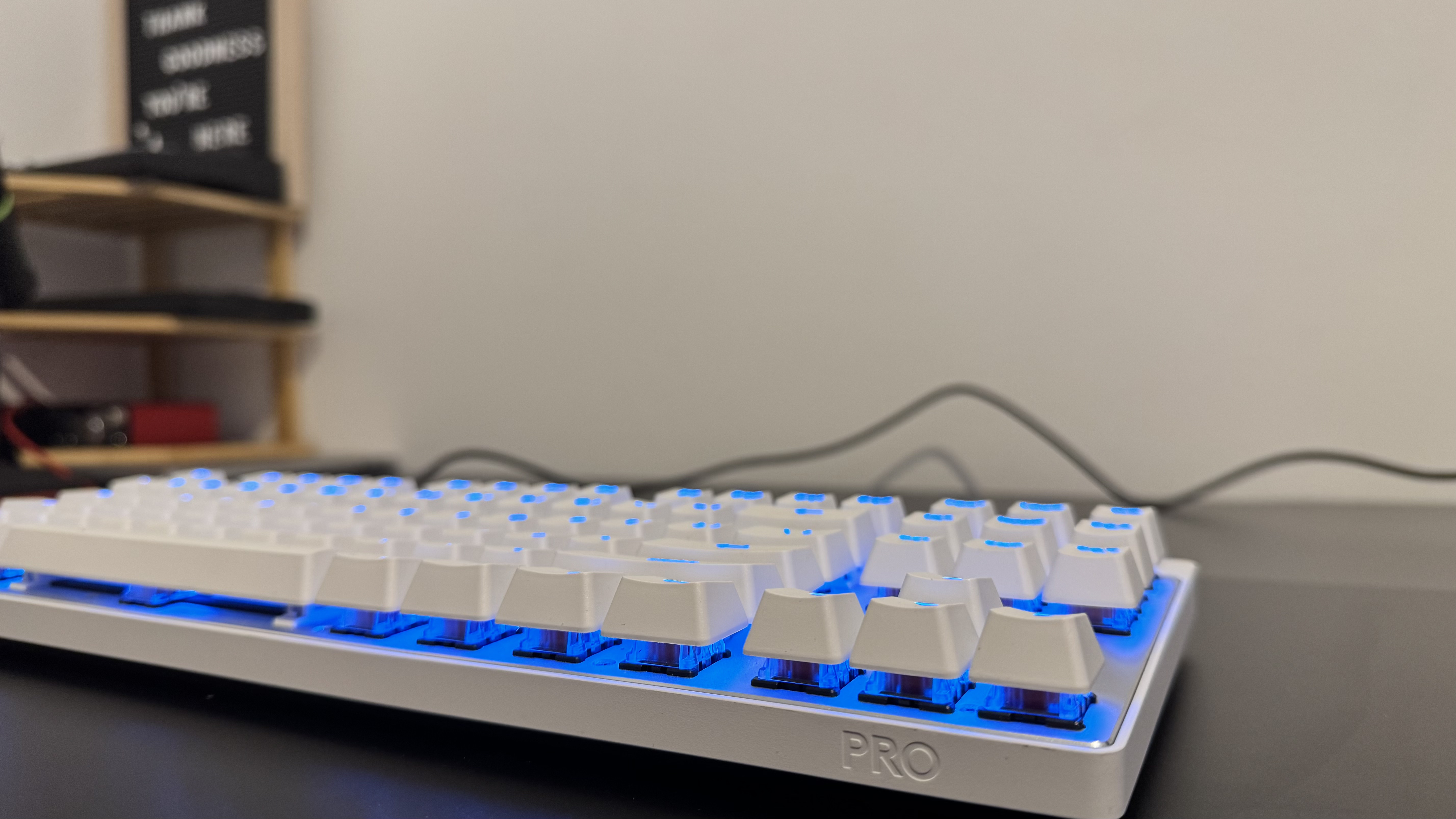
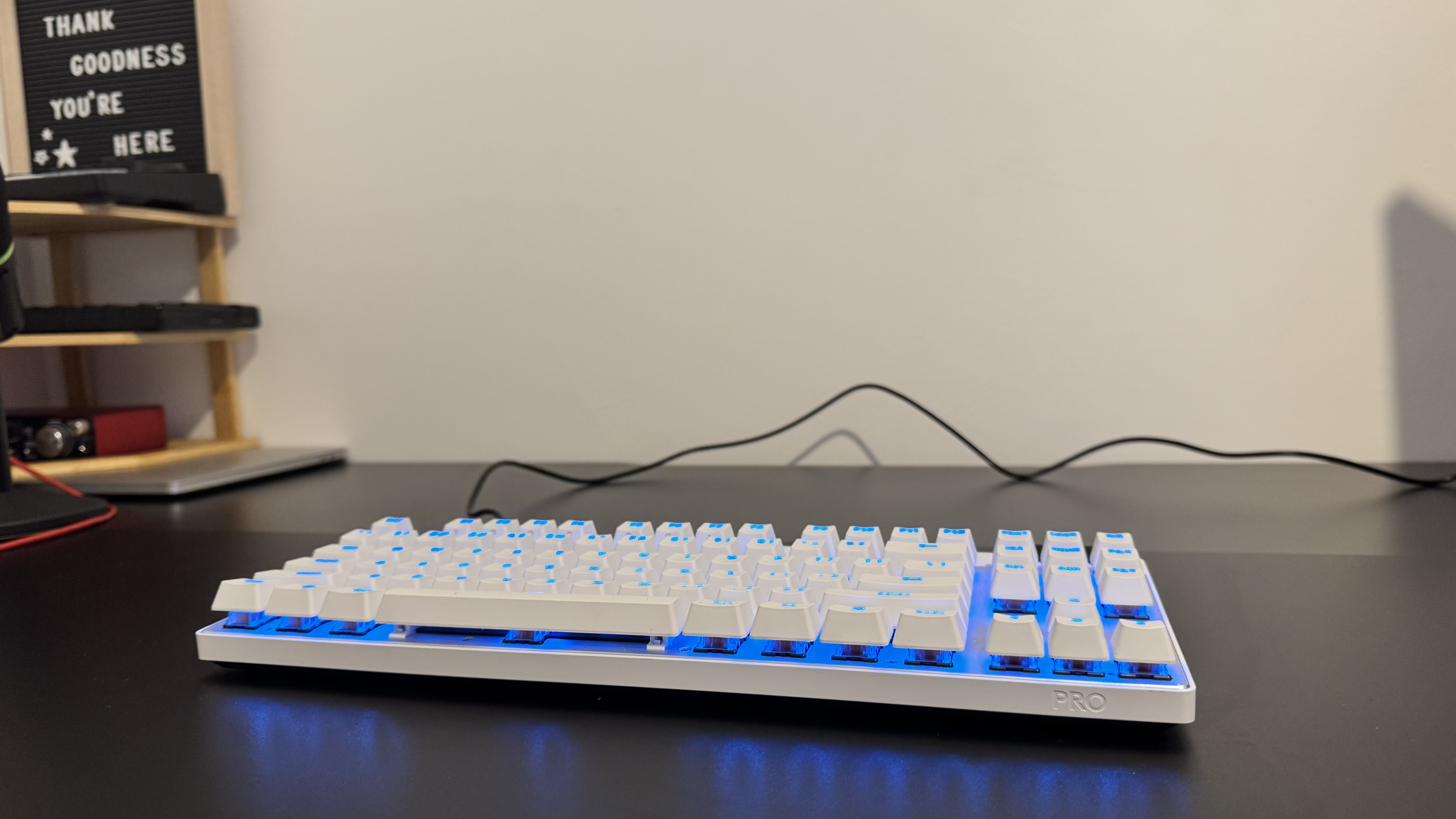
I've had hands on with the white model and I honestly think it looks great on my desk. This keyboard doesn't have a fancy screen and it's slightly smaller, missing out on a num pad but they don't feel like major misses. Fully backlit, the switches have individual RGB which not only allows for custom programming, like animations in the lighting, but also gives it all a vibrant shine.
Of course, if you want something with a little less glare, a lighting button at the top can cycle through a handful of lighting brightnesses and the game mode to the left of this button tactically turns off keys for when you're in the zone.
Initially, this disables the Windows key, lighting, and the menu key. None of these can be turned on in game mode, even when navigating G Hub, which feels a bit needlessly restrictive to me. However, what it's best for is cancelling out buttons near those you may use.
I tested Deadlock, Valve's MOBA, on this keyboard and found getting up to 1,2,3, and 4 to be a joy by turning off 5 and r. Usually, I'm a little more careful hitting the number keys in something so fast-paced for so long but it feels very natural in game mode.
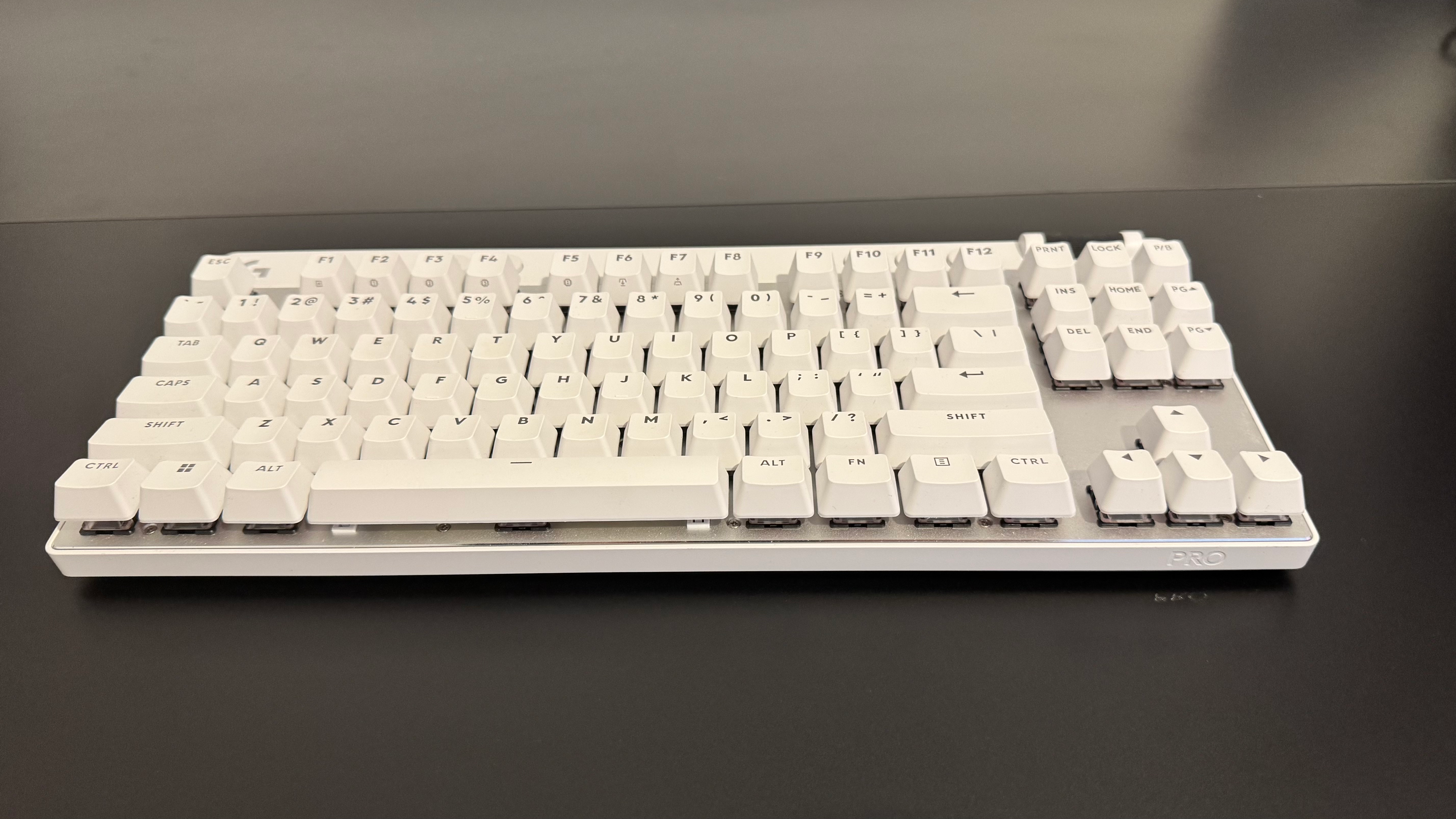
I also tested Counter-Strike 2, making sure to disable SOCD as it can get you banned, and that extra quick stop to movement is genuinely great. I don't consider myself to be a hugely competitive player but I do think I'm just competitive enough to get some geeky joy out of rapid trigger, and it is effective here.
In slower singleplayer games like Red Dead Redemption 2, there's no real need for the tech in this keyboard and you likely won't notice any difference, but the keys are comfortable and the double shot PBT keycaps are smooth and rounded towards your fingertips in a way that makes it quite comfortable to use after hours of play.
This isn't built for single-player games (and a Logitech rep expressed to me that it's not really the best choice for a purely single-player gamer) but you aren't at any sort of a disadvantage when doing so.
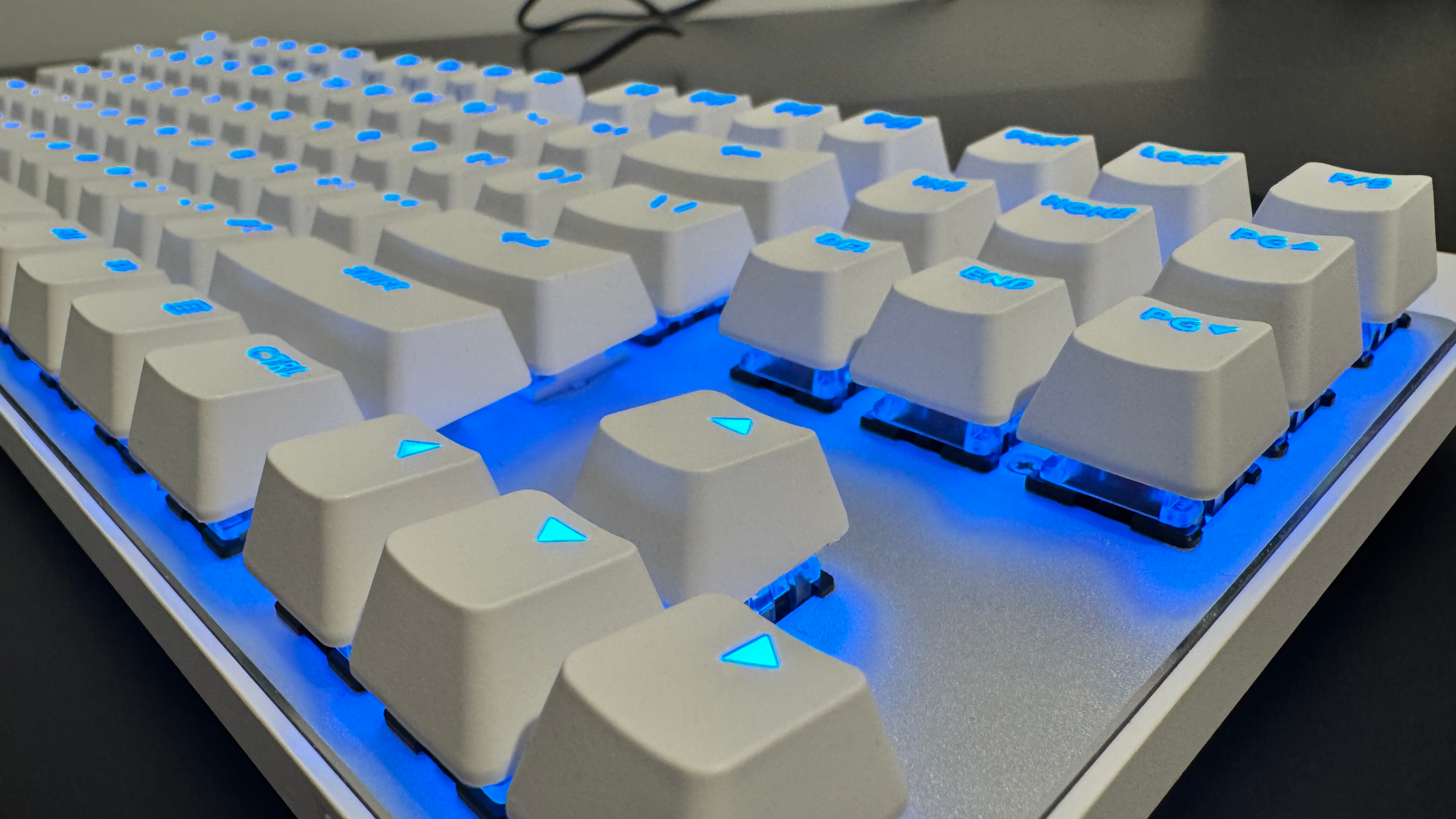
✅ You're looking for a budget rapid trigger keyboard: Though not the absolute cheapest rapid trigger keyboard on the market, the price point of $170 beats out many Keychron, Wooting, and SteelSeries offerings.
✅You don't care about wireless play: The G Pro X TKL Rapid is solid, looks great and feels satisfying to type on, but remains chained to a cable at all times.
❌ You hate a loud keyboard: Though not ear-shatteringly loud, it's got a surprisingly loud thump to it as keys are pressed. That can be especially noticable in the middle of a tense game.
❌ You're not a competitive gamer: Rapid trigger is a bit of keyboard tech that's predominantly used for more competitive play, and mostly unnecessary if you don't game very seriously.
This keyboard isn't all business though. As well as the RGB looking pretty, it has five media controls, four of which being buttons and one being a bar that can change the volume. Through G Hub, you can also set up custom controls for individual keycaps, which makes it a solid browsing keyboard. I've had a lot of problems with Logitech's G Hub software over the last few months but it mostly worked totally fine here, though we did struggle with the app in our Logitech G RS Shifter and Handbrake review.
However, it is worth noting that all these fancy competitive features are reflected in that price. If you want something sturdy, wired, and pretty, yet understated, there are cheaper options like the recent Corsair K70 Core and Endgame Gear KB65HE. Still, if you are a big fan of Logitech, there are a few strong wireless choices.
If, however, you want a rapid trigger analogue keyboard to cut a fraction of your reaction time for the most stable aim in first-person shooters, this is one of the better entry points on the market. It's pretty and solid to boot, feeling sturdy enough to fling in a back and that per key RGB allows a level of aesthetic customisation to make the whole keyboard shine. It's a niche bit of tech but a great one.
